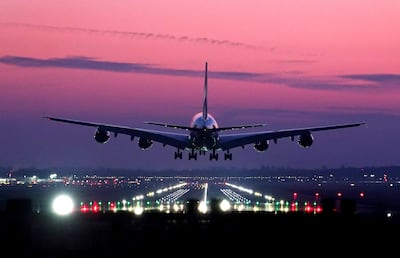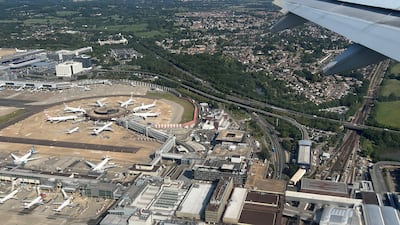Gatwick Airport intends to shift its backup runway by 12 metres so that it can come into use full time under a £2.2 billion ($2.9 billion) plan designed to create thousands of jobs and kick-start the UK economy.
The newly-realigned runway would enable it to be used for departures by narrow-bodied planes such as the Airbus A320 and the Boeing 737 and would mean it could be used for about 100,000 more flights a year. The airport, south of London, currently handles about 280,000 flights a year and is the busiest single-runway airport in Europe.
The standby runway is currently used for aircraft taxiing to and from terminals, but it is also used when the main runway is closed for emergencies or maintenance.
The Government has also indicated its support for Heathrow’s expansion plan.
But it is expected to be many years before construction of a third runway at the west London airport begins, and Gatwick is determined to boost its own capacity.
The second runway plan was given the go-ahead by Transport Secretary Heidi Alexander on Sunday evening, in the week that the ruling Labour Party holds its annual conference and hopes to get on the front foot after several setbacks. The economy has stubbornly failed to improve, immigration has been a persistent thorn in the government’s side, and Prime Minister Keir Starmer suffered the embarrassing loss of three key personnel in recent weeks.
Chancellor Rachel Reeves said on Monday: “This Government promised to kick-start the economy – and we are.
“A second runway at Gatwick means thousands of more jobs and billions more in investment for the economy.”
Ms Reeves views the plan as a signal of the Government’s commitment to back “the builders, not the blockers”.
She said: “By slashing red tape and transforming the planning system to get Britain building again, we are investing in this country’s renewal and building an economy that works for working people.”
Ms Reeves is keen to seize any opportunity for positive economic news as she prepares for her November 26 Budget against a backdrop of sluggish growth and inflation remaining stubbornly above target.
Ms Alexander backed the scheme as a “no-brainer” for economic growth, a Government source said, suggesting flights could take off from the newly authorised runway before 2029.
The Cabinet minister is satisfied with adjustments made, covering issues such as noise mitigation and the proportion of passengers who would travel to and from the airport by public transport.

It comes after the Planning Inspectorate initially rejected the airport’s application and earlier this year recommended that Ms Alexander approve the project if the changes were made.
New commitments include Gatwick’s management setting its own targets for the proportion of passengers who travel to the airport by public transport, rather than accepting a legally binding target.
Gatwick, which is owned by the French company Vinci and the investment fund Global Infrastructure Partners, says its entirely privately-financed plans will create £1 billion a year in economic benefits, and generate an additional 14,000 jobs.
It says passenger numbers could rise from about 45 million to 75 million by the late 2030s.
It is the UK’s second busiest airport and one of the busiest single-runway airports in the world.
Spare slots at peak periods are scarce and the runway is heavily utilised, meaning disruption can have a severe knock-on effect.
The plan also involves remodelling and replacing existing taxiways, which connect runways to terminals, hangars and other sites, extending both terminals and installing new aircraft gates.
Gatwick says it would pay for road connections to both terminals to be enhanced, creating flyovers that separate local traffic from vehicles travelling to or from the airport.
A £250 million upgrade of the airport’s railway station was completed in November 2023.
Residents affected by more noise will be able to ask Gatwick to cover the costs of triple-glazed windows.
Homeowners, living directly beneath the new flight routes who choose to sell could have their stamp duty and reasonable moving costs paid, as well as estate agent fees of up to 1 per cent of the purchase price.
Local campaigners opposed to expansion are concerned about the impact on surface transport, noise, housing provision and wastewater treatment, but the airport insists it has conducted “full and thorough assessments” of those issues.
The move was welcomed by the shadow transport secretary Richard Holden, who accused Labour of delaying the “key” decision.
But Green Party leader Zack Polanski said: “Labour keeps wheeling out the same nonsense about growth, but at what cost? What this really means is more pollution, more noise for local communities, and no real economic benefit.”


